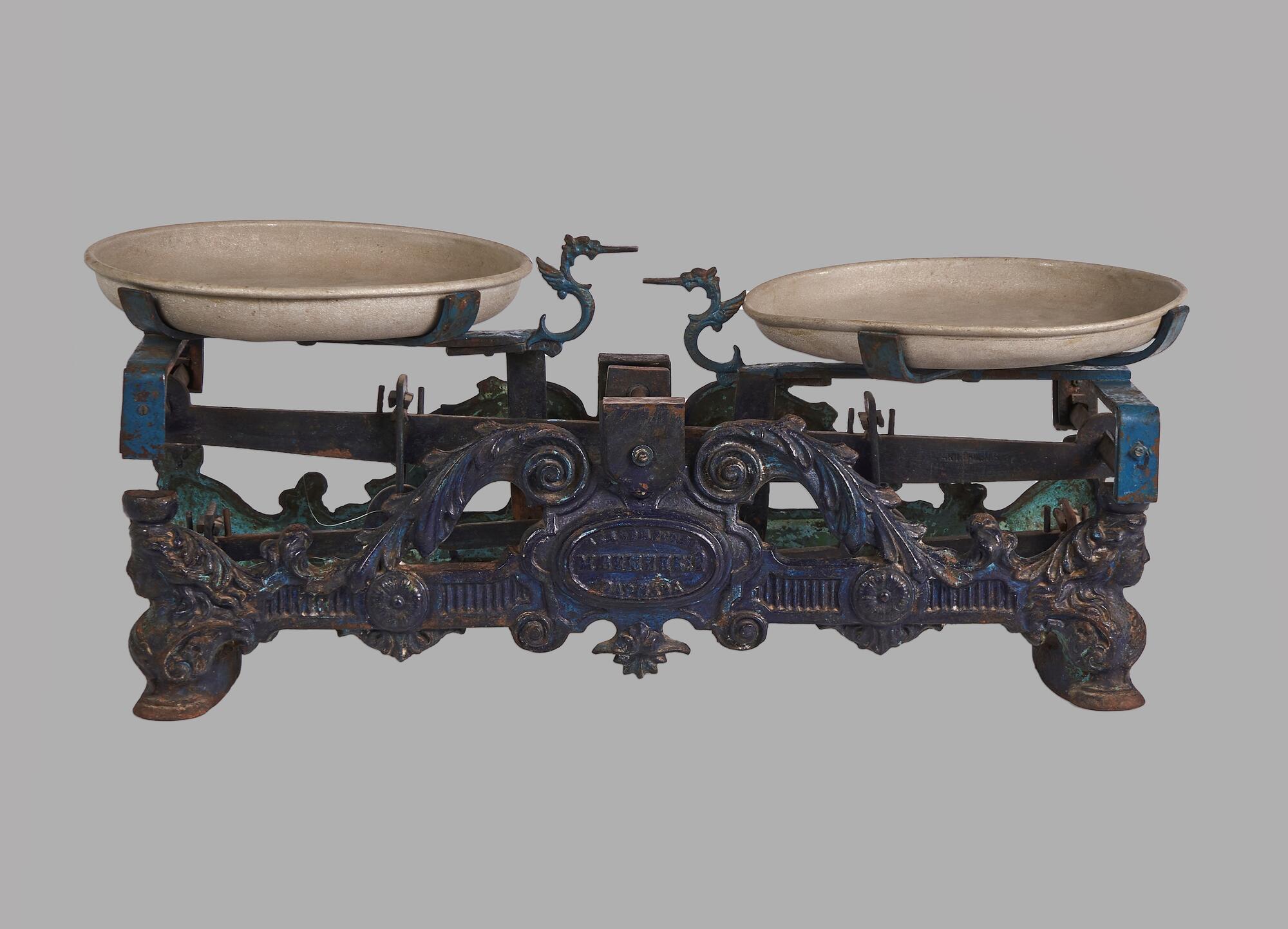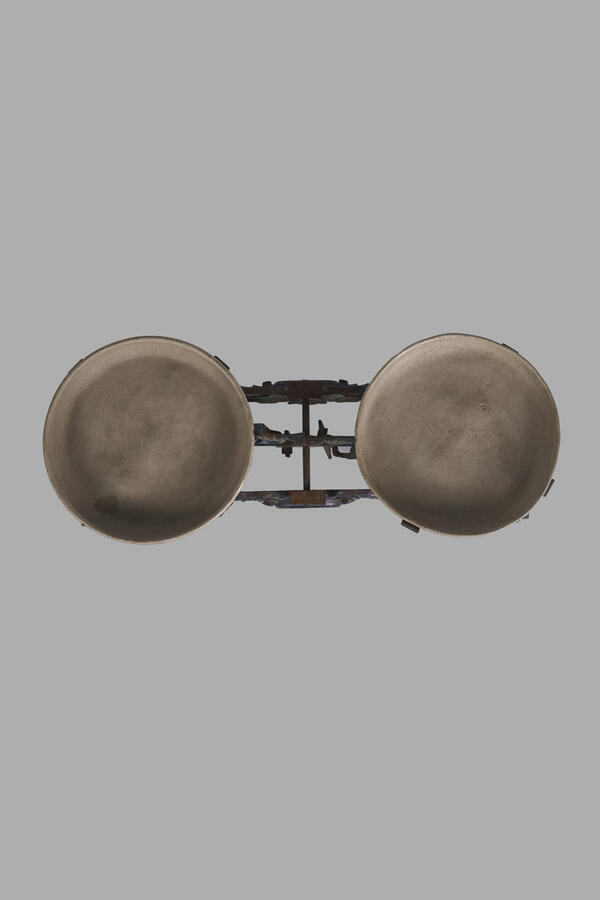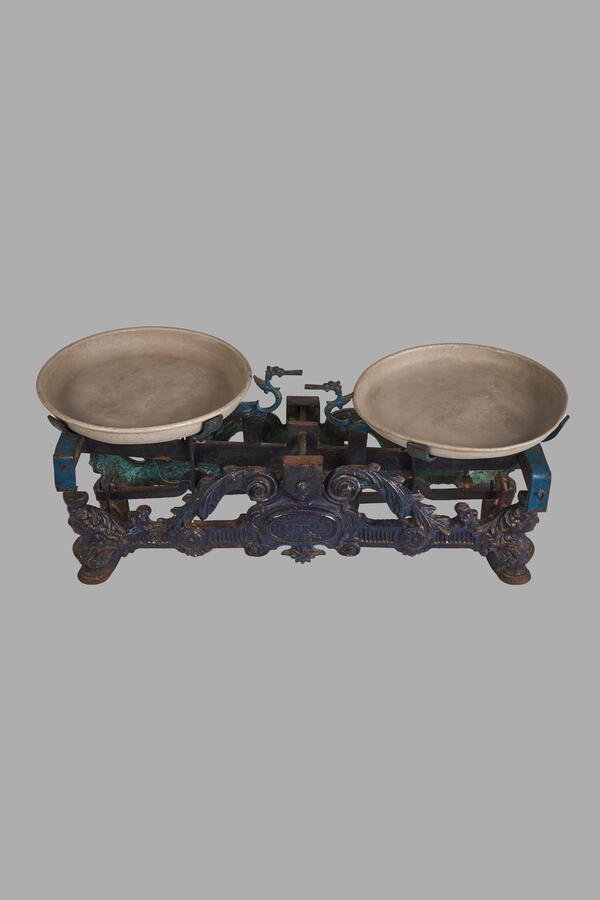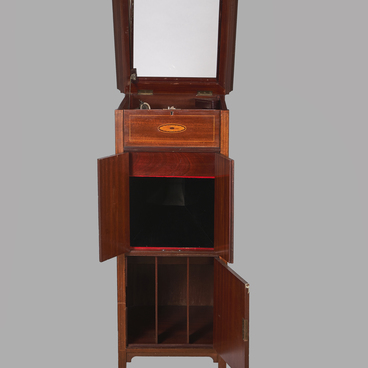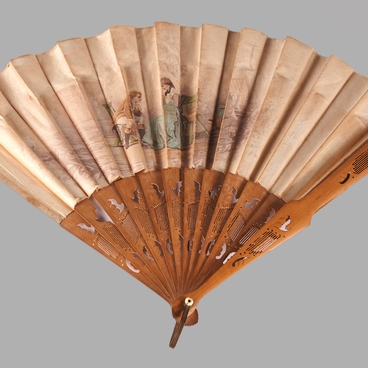Since ancient times, various scales have been the most important instrument of trade. Electronic scales that we use today were invented relatively recently. Representatives of the older generations still remember the Beranger balance scales with two bowls or plates. The French inventor Joseph Béranger proposed to improve the design of the scales of his predecessor Gilles de Roberval with additional levers, which made it possible to increase the sensitivity of the device.
The Beranger system counter scale with equal-arm levers that are on display in the museum date back to the beginning of the 20th century when the first samples of this type were made. The scale with a cast iron mount were made in Warsaw.
The base of the scales has an open lever mechanism inside. At the ends of the levers, there are two movable platforms with bowls. One of them was for placing goods, and the second one was for placing measuring weights of a strictly defined weight, so that the exact weight of the goods could be determined.
Beranger scales were always richly decorated. The scale from the museum has scrolled dragon-shaped pointers at the ends of the platforms determining the balance of the scales. The openwork casting on the front and back feature harpies — mythological women with a “golden” apple from the garden of the Hesperides on their heads. There are cast oval medallions in the center of the front and back base sides. The factory mark on the front reads: Warsaw factory of metal products “Martin Veshitsky”. The maximum load capacity for weighing — 20 kg — is indicated on the back.
Aluminum bowls were made later — they do not come from this set of scales. At that time, copper or brass bowls were used for scales. The scales and the measuring weights from the set were subject to periodic — at least once a year — verification in the calibration chamber of measures and weights, after which special stamps were placed on them. There are illegible fragments of old stamps on the museum scale.
The scale had been used for many decades before entering the museum in the early 1980s from the lighthouse department at Cape Doob, where it was used to weigh food.
The Beranger system counter scale with equal-arm levers that are on display in the museum date back to the beginning of the 20th century when the first samples of this type were made. The scale with a cast iron mount were made in Warsaw.
The base of the scales has an open lever mechanism inside. At the ends of the levers, there are two movable platforms with bowls. One of them was for placing goods, and the second one was for placing measuring weights of a strictly defined weight, so that the exact weight of the goods could be determined.
Beranger scales were always richly decorated. The scale from the museum has scrolled dragon-shaped pointers at the ends of the platforms determining the balance of the scales. The openwork casting on the front and back feature harpies — mythological women with a “golden” apple from the garden of the Hesperides on their heads. There are cast oval medallions in the center of the front and back base sides. The factory mark on the front reads: Warsaw factory of metal products “Martin Veshitsky”. The maximum load capacity for weighing — 20 kg — is indicated on the back.
Aluminum bowls were made later — they do not come from this set of scales. At that time, copper or brass bowls were used for scales. The scales and the measuring weights from the set were subject to periodic — at least once a year — verification in the calibration chamber of measures and weights, after which special stamps were placed on them. There are illegible fragments of old stamps on the museum scale.
The scale had been used for many decades before entering the museum in the early 1980s from the lighthouse department at Cape Doob, where it was used to weigh food.
